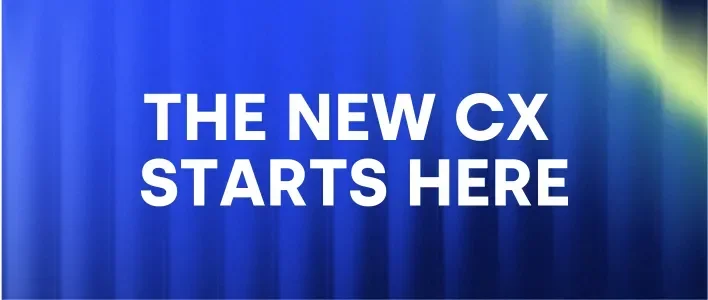Multi-Layer Dispositioning for Social Care
By Ed Margulies A big challenge for practitioners of social engagement for customer care is the proper dispositioning of customer posts and interactions. In traditional contact centers, dispositioning can be handled by case management systems, ACD outcomes and CRM systems.
Historically, the discipline of tagging social posts for proper dispositioning has fallen through the cracks for most social platforms because the majority were built for marketing, not customer care. This article walks you through the essentials for multi-layer dispositioning and acts as a guide for choosing the right social care platform. What's Dispositioning? A disposition is a way to tag or characterize an interaction step with a customer. Dispositions can have different "states" such as "open, closed or transferred" to indicate where you are in the process with a customer interaction. For example, an open state may be: "outreach in progress." A closed state may be: "closed - issue resolved." A transferred state may be: "transferred to retention desk." As you can imagine, it is often useful to have interim states and sub-categories depending on how sophisticated your workflow is. The Value of Dispositioning Proper dispositioning improves customer service for several reasons. First, by tracking the disposition steps of a customer interaction, supervisors can have a better handle on service levels and the efficacy of his or her customer care team. For example, you can look at real time reports or dashboards indicating how many interactions are in an open versus closed state. This helps to manage the workforce and make adjustments to schedules and best practices for engagement. Second, by tracking disposition steps, agents and internal experts are better prepared to hand-off action items and workflow steps to one another. That is to say, that an initial agent can do up-front work, change the disposition of a work item to "transferred - technical specialist" and then the item can be routed to a technical specialist to take over the next step of the interaction. Without dispositioning, all of this becomes manual and therefore fraught with errors and inefficiency. Types of Dispositioning There are four main types of dispositioning. When used in combination, you can implement a multi-layer dispositioning strategy that will cover almost any contingency: 1. Automatic Dispositioning 2. Semi-Automatic Dispositioning 3. Manual Dispositioning for Workflow Identification 4. Manual Dispositioning for Outcomes and Wrap-Up Activities Automatic Dispositioning You can set up logical triggers to cause certain dispositions to be tagged onto social posts (i.e. interactions) automatically. To do this, you will need to use a social engagement platform with a built-in Rules Engine and also Natural Language Processing (NLP/NLU). A rules engine can be used to trigger rules such as next best actions or automatic dispositioning of a social post. For example, if you don't want your agents poring over re-tweets (because they are not individually actionable), you can use a rule that automatically closes (tags for closed disposition) any tweets that are retweets. Likewise you can trigger on certain words to close or transfer certain social posts. Automatic dispositioning becomes even stronger when you add the power of NLP. Engagement platforms with NLP make it easy to disposition based on spam analysis, sentiment and topic themes. In combination, rules engines and NLP let you do things like take all "angry Tweets" about a certain product, and for people with influence scores above 20, and send them to the retention desk automatically. This skips several dispositioning steps and saves a lot of time for social care professionals. Add to this a rule that adds-in the customer's value score internally and you can start to see how powerful automatic dispositioning can be. Semi-Automatic Dispositioning You can partially automate dispositioning by providing next best actions (NBA) to agents based on rule triggers. If your company sells mobile handsets and you have a policy that so long as breakage happens within 30 days you replace the handset at no charge… you can prompt agents with NBAs to give them guidance on this. Let's say, for example, you use the rules engine to trigger on any word cloud that mentions "new broken phone" or "new broken handset" or "new phone broke." Let's also trigger the rule based on a "not happy" sentiment. Finally, let's do a data dip on the author of the post to confirm they are an existing customer. Viola! You have all the elements you need to conclude that most posts fitting this set of conditions may be a candidate for a replacement phone. You can even combine automatic dispositioning with semi-automatic by first routing all posts that meet the sample criteria to a support specialist and secondly by providing an NBA to the specialist. This saves the support desk person the time of fishing around for qualifying customers he or she can help - and for newly on-boarded agents, they get the NBA text to provide best practice guidance at the same time. Workflow Identification Another manual dispositioning method is the ability to drill down on sub-topics or attributes that define the more detailed steps of workflow. For example, a cable company may start with a tier one technical support agent if a customer complains about a bad picture. This may progress from simple troubleshooting to the opening of an incident ticket or an escalated case. This may further be handed-off to a tier two specialist that may query a cable box remotely or try to update firmware remotely. If that does not clear the problem, the interaction may flow to a RMA (Return Material Authorization) specialist to arrange for a loaner cable box and the return of the old one. Finally - and of course a step cable companies do not want to resort to - would be a "truck roll" in which a service technician is dispatched to the customer location. Each of these steps can have an attribute name that can be offered to the agent in the form of a drop-down list. Again, the rules engine can be used to trigger on the "event" of the disposition changing from one state to the next. These can also be characterized as transfers so the next person in the workflow chain can automatically receive notice or filter on the same interactions. Now imagine having additional drop-down lists so agents can manually tag other attributes such as customer region, or type of complaint, or severity. The ability to run reports or view real time dashboards on these attributes is a boon to supervisor and business analyst productivity as well. Outcomes and Wrap-Up Activities The last kind of dispositioning example deals with the manual tagging of attributes for wrap-up and outcomes. These can be seen as extensions of the workflow process discussed above, but they typically occur after the customer interaction part has been completed. For example, a typical wrap-up activity for a sales interaction would be some kind of fulfillment. This could be kicking-off the shipping of a product or follow-up sales collateral. Another wrap-up activity could be emailing instructions for an RMA or mailing a postage-prepaid box to a customer to send back a faulty product. Outcomes and reason codes are also popular post-interaction attributes that can be added manually by the agent. For example, an outcome may be: "made the sale." Another outcome may be: "issue resolved - customer satisfied." Another still could be: "issue resolved - customer angry." All of this disposition data can be used to trigger post-interaction surveys, NPS-like scoreboards, or supervisory follow-up. Conclusion Multi-Layer dispositioning is an essential part of any world-class customer care organization. Don't let the ability to automatically or manually process customer service interactions fall by the wayside just because you are embracing social care. Modern social engagement for customer care systems - the ones actually built around customer service - have the ability to do some, if not all types of dispositioning. I urge you to take the time to investigate these options in choosing the proper platform and further invest the time in setting up the rules, triggers and actions that accompany various dispositions. The result will be happier customers and a highly efficient social care team.



